Before chai became a daily ritual in almost every Indian household, before railway stations echoed with the call of “chai, chai!”, and before it became synonymous with warmth and conversation—tea had a long, winding journey into Indian soil and soul.
Though tea plants are native to Assam and parts of northeast India, the story of chai as we know it today really begins during British colonial rule in the early 19th century. The British East India Company, eager to reduce their dependence on Chinese tea imports, started cultivating tea in India—particularly in Assam, Darjeeling, and later the Nilgiri Hills.
Initially, Indians weren’t avid tea drinkers. It was the Indian Tea Association that encouraged tea drinking in the 1900s—often promoting it as part of work breaks, especially on railway platforms and in factories. Over time, tea sellers (or chaiwallahs) began to infuse their tea with spices, milk, and sugar—adapting it to Indian palates. And just like that, masala chai was born: not merely a beverage, but a national obsession.
Darjeeling and the Nilgiris – The Crown Jewels of Indian Tea
Darjeeling – The Champagne of Teas
Nestled in the Himalayan foothills, Darjeeling is world-famous for its delicate, floral-scented tea. Unlike the strong, malty teas of Assam, Darjeeling tea is lighter and often drunk without milk. It’s known for its “muscatel” flavor, a fruity, wine-like note that comes from the region’s unique climate. Darjeeling black tea is best savored plain or lightly brewed—it doesn’t usually go into masala chai, but it’s a treasure of its own.
The Nilgiris – Fragrant Blue Mountains
The Nilgiri Hills, located in Tamil Nadu, offer a different tea profile altogether. Grown at high altitudes, Nilgiri tea is fragrant, brisk, and strong—making it perfect for milk teas and blends like chai. Its bright color and ability to hold its own against bold spices make it a common base for south Indian masala chais.
Today, both these regions—along with Assam—remain at the heart of India’s tea heritage. They contribute not just to domestic consumption but are celebrated globally for their variety and craftsmanship.
The Role of Masala
What sets Indian chai apart from any other tea in the world is the masala—a spice blend that varies from home to home, often passed down through generations. The mix may be simple (ginger and cardamom) or complex (nutmeg, mace, pepper, fennel, and beyond), but it transforms black tea into something deeply warming, personal, and culturally rooted.
Making your own chai masala powder means capturing that tradition in your kitchen—a fragrant, spice-filled reminder of where chai comes from and why we still reach for it, every single day.
The Spices That Make the Magic
No quantities here (check the recipe card below), but here’s what goes into it:
- Cinnamon: Warm and woody, it forms the spicy base.
- Green Cardamom: Lends a sweet and citrusy perfume—indispensable in Indian chai.
- Black Cardamom: Adds a deep, smoky note.
- Cloves: A tiny spice with intense heat and complexity.
- Peppercorns: For that sharp, awakening zing.
- Fennel Seeds: A cooling counterpoint to the heat—slightly sweet and licorice-like.
- Dry Ginger: A grounding spice with earthy warmth.
- Nutmeg and Mace: Rarely used in everyday tea, but these two bring a festive aroma that makes your chai feel like a celebration.
Each spice is carefully roasted to unlock its essential oils, then ground and stored for use throughout the season.
What Happens in the Pan
To make your chai masala truly shine, it begins with gentle dry roasting. The idea is not to toast until brown, but to wake up the essential oils in each spice.
Once cool, all the roasted spices are blended into a fine, fragrant powder. You’ll notice the aroma fill the room—sharp, sweet, spicy, warm—all at once. Store it in an airtight container and just a pinch per cup will completely transform your tea.
How to Brew Masala Chai with It
Making chai with this masala is simple and meditative
- In a saucepan, bring water to a boil.
- Add your favorite loose tea granules or tea leaves.
- Sprinkle in a pinch of your chai masala powder.
- Add milk and let it all boil slowly to let the flavors meld.
- Finally, stir in sugar (to taste), let it rise once, then turn off the heat.
- Strain into a cup, breathe in the aroma, and sip.
What to Serve With Masala Chai
- Mini samosas
- Khari biscuits
- Parle-G or Marie Gold
- Banana chips
Or simply on its own, with the window open and a book in hand.
How to Store or Gift It
- Store in a glass jar or spice tin in a cool, dry place.
- Make small batches every 2–3 weeks for maximum freshness.
- Add a handwritten tag and you’ve got a beautiful, fragrant homemade gift for friends who love chai.
For a Crowd?
- Brewing for a family get-together or brunch?
- Use one pinch per cup, or adjust depending on your audience’s spice tolerance.
- Make a big batch of chai in a large saucepan and keep it simmering gently.
- Serve in cutting chai glasses or kulhads (clay cups) for that authentic touch.
Chai Masala Powder
Description
There’s nothing quite like the comforting aroma of Indian Masala Chai wafting through your kitchen. This homemade chai masala powder is a blend of warm, whole spices like cinnamon, cardamom, cloves, ginger, and nutmeg — roasted and ground fresh to create a deeply flavorful tea experience. With just a few simple steps, you can whip up your own spice blend and brew the perfect cup of masala chai right at home. Ideal for chilly mornings, cozy evenings, or anytime you need a little pick-me-up with your favorite snack. Once you make this from scratch, you'll never want store-bought again!
Ask ChatGPT
Ingredients
To make chai masala powder
Instructions
Prep Work
-
Dry roast whole spices
Heat all the whole spices in a pan on low flame until fragrant. Let cool.
-
Cool spices before grinding
Allow the roasted spices to cool completely before grinding them.
Method
-
Roast spices
Heat a pan on low flame and add cinnamon, green cardamom, black cardamom, cloves, peppercorns, fennel seeds, dry ginger, nutmeg and mace. Dry roast for 10 mins.
-
Cool the mixture
Remove from heat and let the roasted spices cool down completely. -
Grind to powder
Transfer the cooled spices into a mixer jar and grind them into a fine powder. -
Store the masala
Store the ground chai masala powder in an airtight container or bottle. -
Boil water
In a saucepan, bring water to a boil. -
Brew tea
Add tea granules to the boiling water and let it brew. -
Add masala and milk
Stir in the prepared chai masala powder and pour in the milk. Let it boil for 5 mins. -
Add sugar
Once the milk bubbles up, add sugar and let it boil for 2 more minutes before turning off the stove. -
Serve hot
Pour into cups and serve your hot, aromatic masala chai with samosas or your favorite biscuits.
Nutrition Facts
Servings 5
- Amount Per Serving
- Calories 72kcal
- % Daily Value *
- Total Fat 2.3g4%
- Saturated Fat 1.3g7%
- Cholesterol 5mg2%
- Sodium 20mg1%
- Potassium 190mg6%
- Total Carbohydrate 11g4%
- Dietary Fiber 1g4%
- Sugars 8g
- Protein 2g4%
- Vitamin A 65 IU
- Vitamin C 1 mg
- Calcium 78 mg
- Iron 0.6 mg
- Magnesium 14 mg
- Zinc 0.3 mg
- Manganese 0.9 mg
* Percent Daily Values are based on a 2,000 calorie diet. Your daily value may be higher or lower depending on your calorie needs.

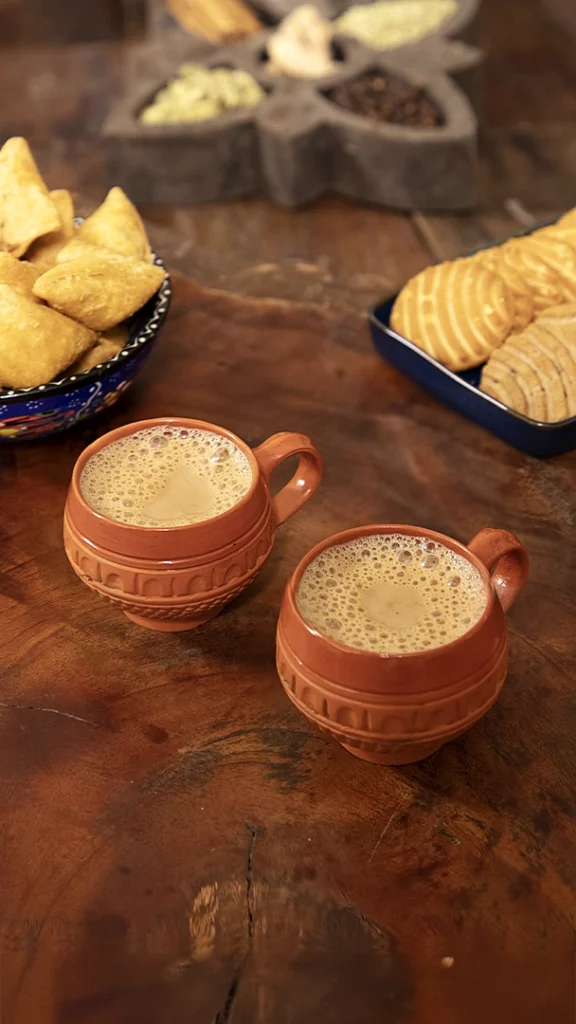

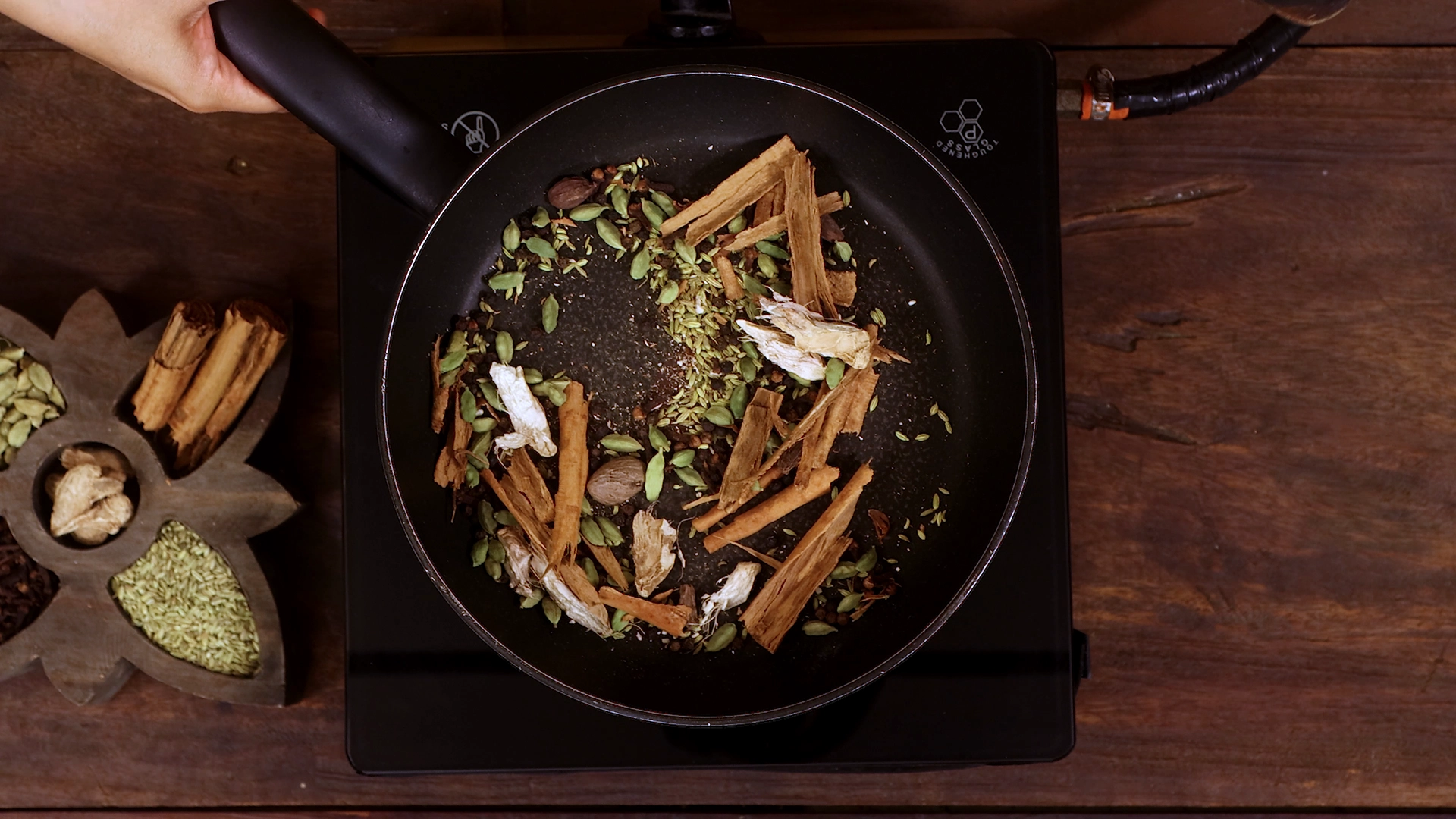
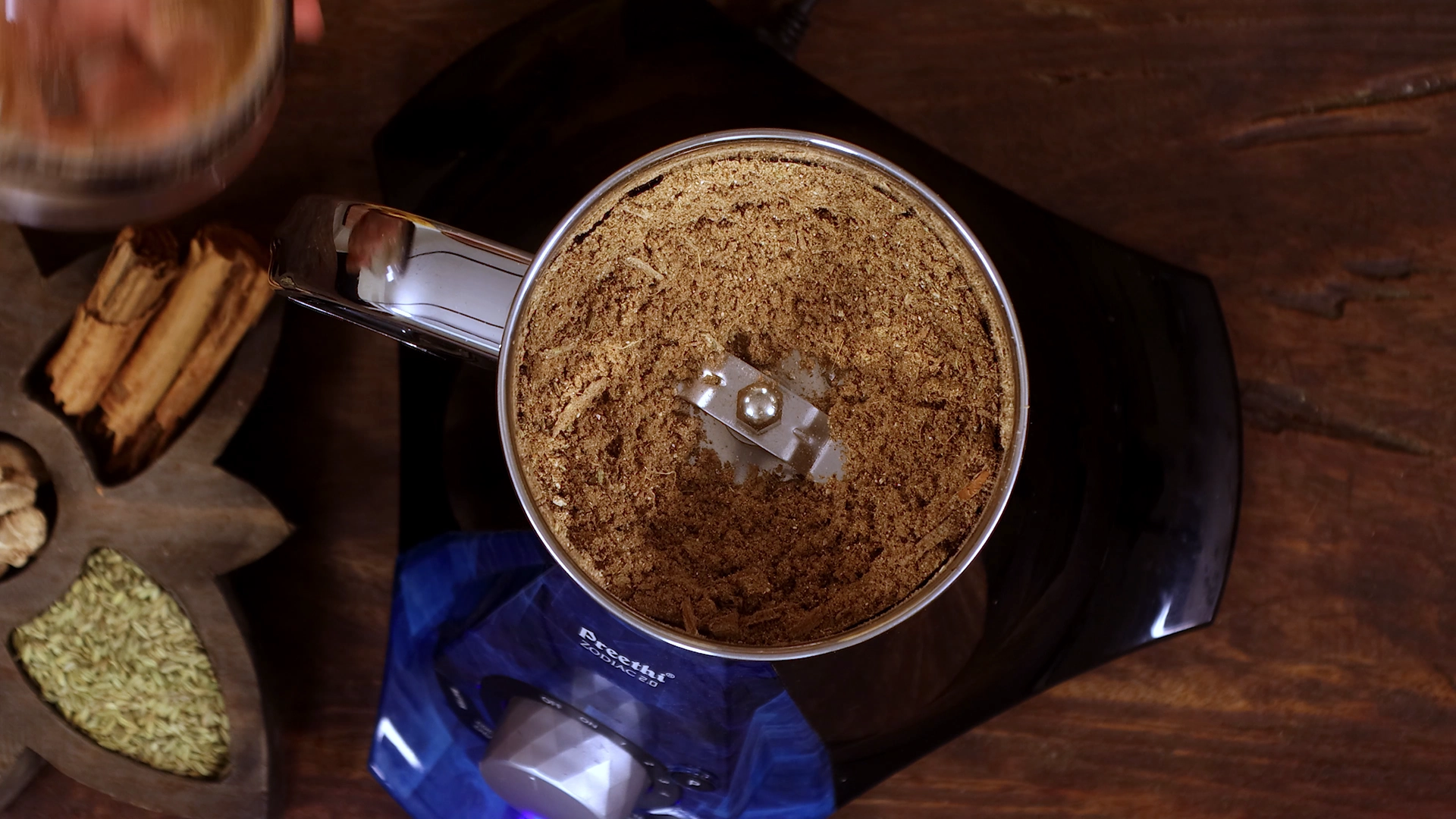
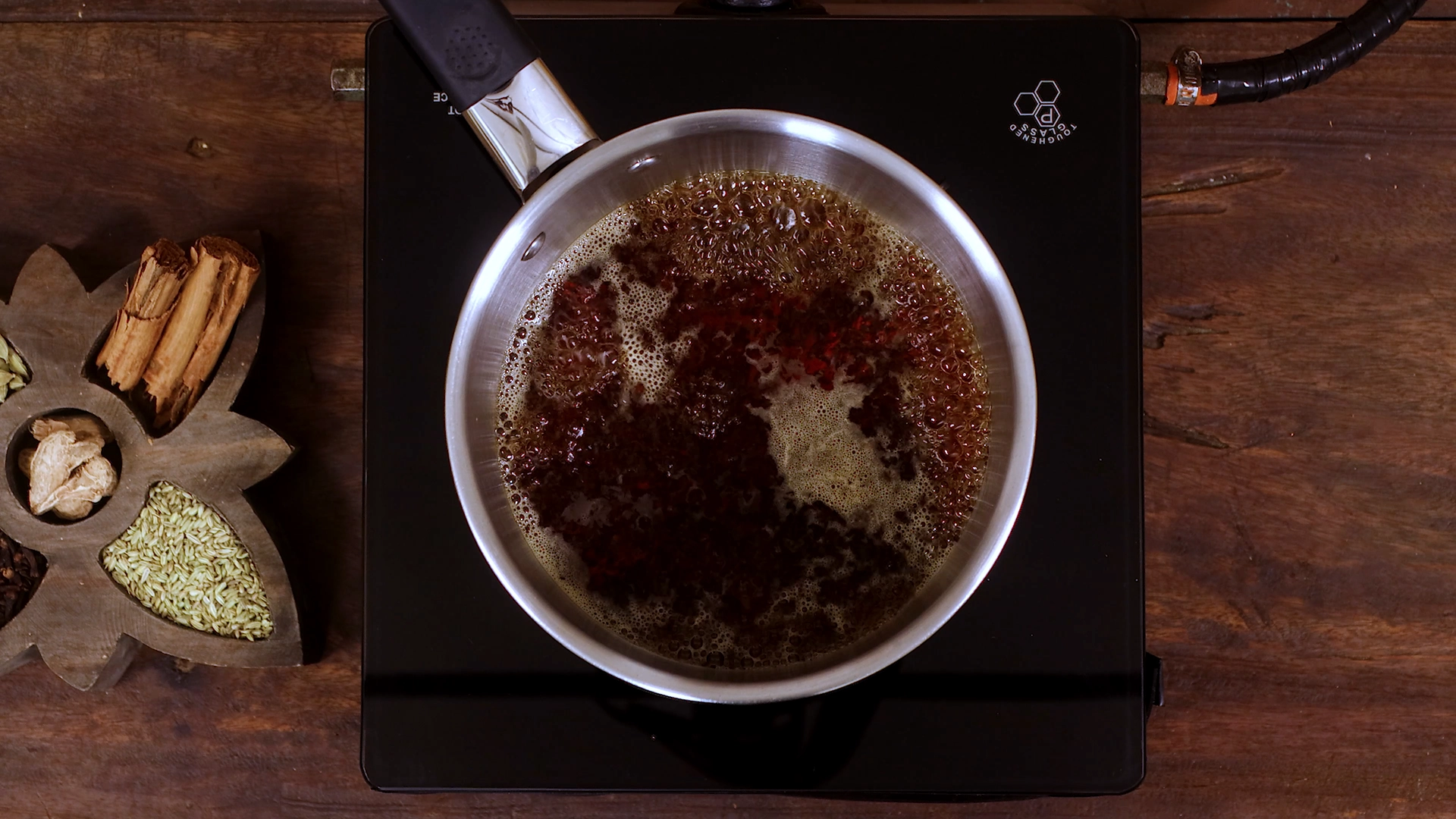
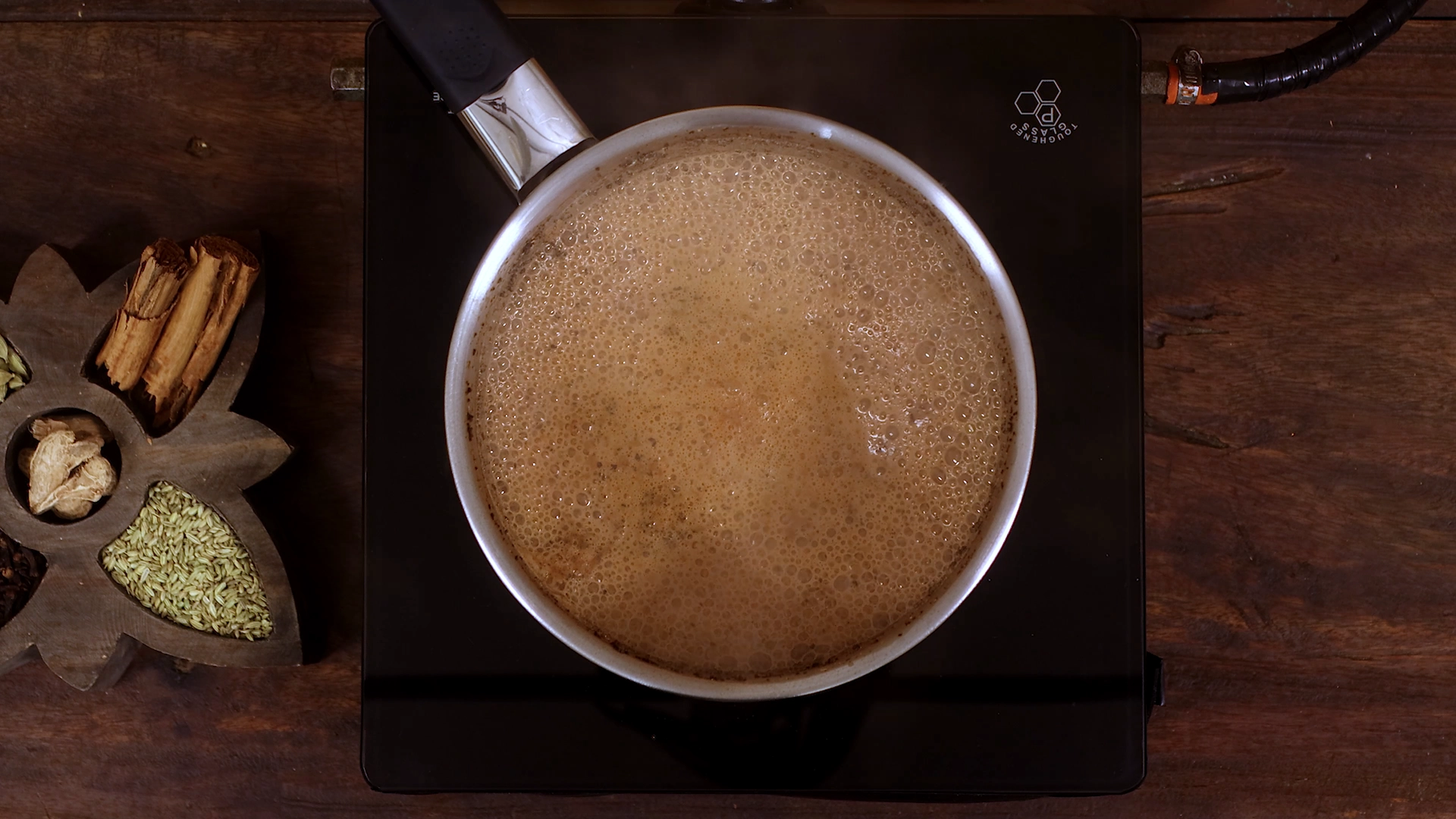
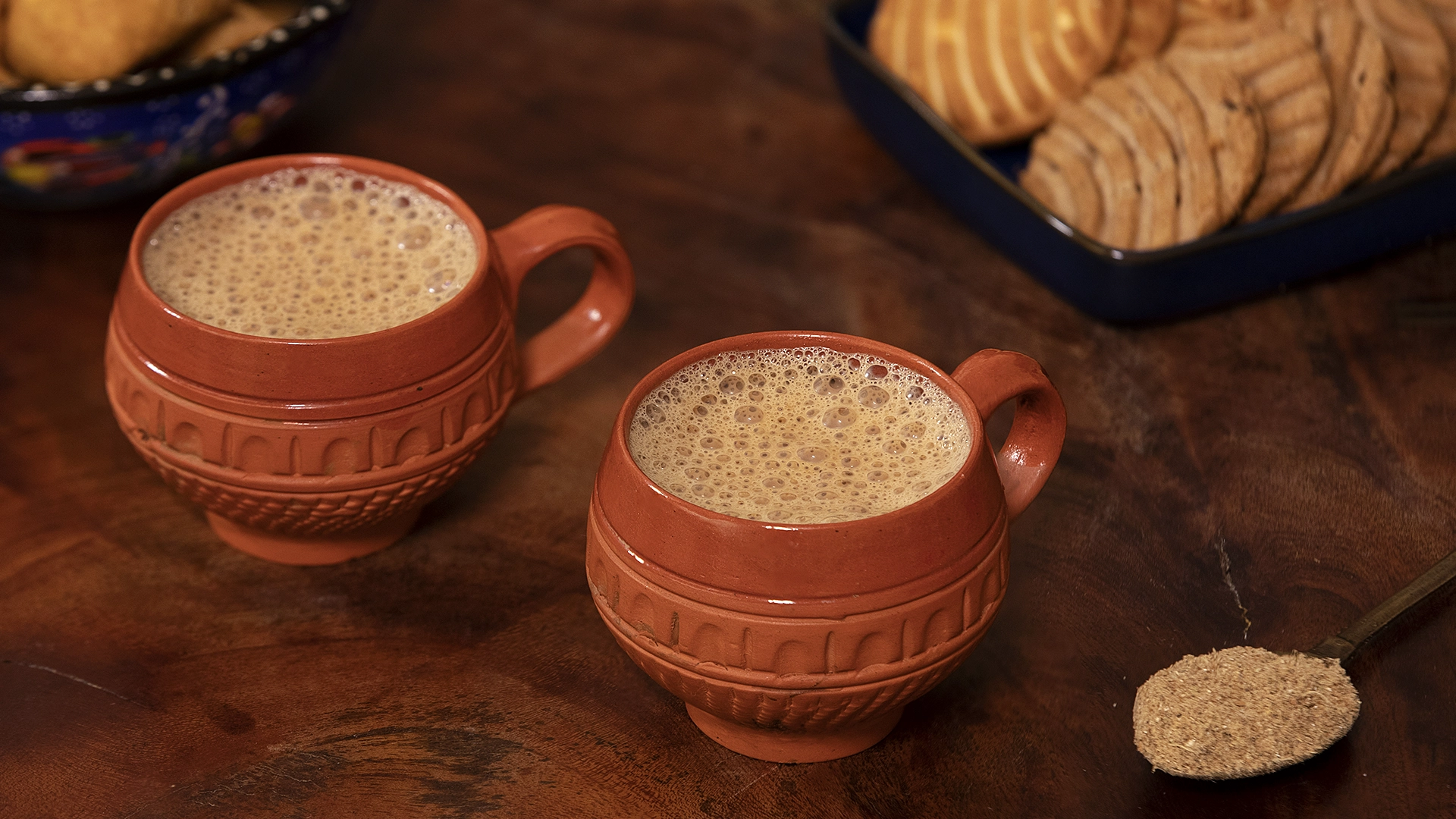





User Reviews
So Tasty 😋